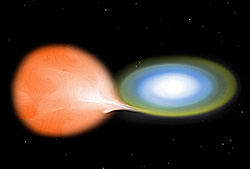Suggested Topics within your search.
Suggested Topics within your search.
tepelná izolácia stavieb
28
Exclude matching results
thermal insulation of buildings
28
Exclude matching results
technické normy a štandardy
17
Exclude matching results
soundproofing
16
Exclude matching results
zvuková izolácia
16
Exclude matching results
chemická analýza
11
Exclude matching results
metalurgia
11
Exclude matching results
exterior walls
5
Exclude matching results
insulation of buildings
5
Exclude matching results
izolácia stavieb
5
Exclude matching results
obvodové steny
5
Exclude matching results
Signalling devices
4
Exclude matching results
divadelné súbory
4
Exclude matching results
signalizačné zariadenia
4
Exclude matching results
divadelné festivaly a prehliadky
3
Exclude matching results
floors
3
Exclude matching results
podlahy
3
Exclude matching results
070.48
2
Exclude matching results
Fire protection
2
Exclude matching results
Fire signalling devices
2
Exclude matching results
Power supply units
2
Exclude matching results
Rómovia
2
Exclude matching results
Thermal protection of buildings
2
Exclude matching results
fire safety of buildings
2
Exclude matching results
forms (law)
2
Exclude matching results
heat cladding
2
Exclude matching results
hydroizolácia stavieb
2
Exclude matching results
insulating materials
2
Exclude matching results
izolačné materiály
2
Exclude matching results
marketing
2
Exclude matching results
Nova
 A nova is a transient astronomical event that causes the sudden appearance of a bright, apparently "new" star (hence the name "nova", Latin for "new") that slowly fades over weeks or months. All observed novae involve white dwarfs in close binary systems, but causes of the dramatic appearance of a nova vary, depending on the circumstances of the two progenitor stars. The main sub-classes of novae are classical novae, recurrent novae (RNe), and dwarf novae. They are all considered to be cataclysmic variable stars.
A nova is a transient astronomical event that causes the sudden appearance of a bright, apparently "new" star (hence the name "nova", Latin for "new") that slowly fades over weeks or months. All observed novae involve white dwarfs in close binary systems, but causes of the dramatic appearance of a nova vary, depending on the circumstances of the two progenitor stars. The main sub-classes of novae are classical novae, recurrent novae (RNe), and dwarf novae. They are all considered to be cataclysmic variable stars.Classical nova eruptions are the most common type. This type is usually created in a close binary star system consisting of a white dwarf and either a main sequence, subgiant, or red giant star. If the orbital period of the system is a few days or less, the white dwarf is close enough to its companion star to draw accreted matter onto its surface, creating a dense but shallow atmosphere. This atmosphere, mostly consisting of hydrogen, is heated by the hot white dwarf and eventually reaches a critical temperature, causing ignition of rapid runaway fusion. The sudden increase in energy expels the atmosphere into interstellar space, creating the envelope seen as visible light during the nova event. In past centuries such an event was thought to be a new star. A few novae produce short-lived nova remnants, lasting for perhaps several centuries.
A recurrent nova involves the same processes as a classical nova, except that the nova event repeats in cycles of a few decades or less as the companion star again feeds the dense atmosphere of the white dwarf after each ignition, as in the star T Coronae Borealis.
Under certain conditions, mass accretion can eventually trigger runaway fusion that destroys the white dwarf rather than merely expelling its atmosphere. In this case, the event is usually classified as a Type Ia supernova.
Novae most often occur in the sky along the path of the Milky Way, especially near the observed Galactic Center in Sagittarius; however, they can appear anywhere in the sky. They occur far more frequently than galactic supernovae, averaging about ten per year in the Milky Way. Most are found telescopically, perhaps only one every 12–18 months reaching naked-eye visibility. Novae reaching first or second magnitude occur only a few times per century. The last bright nova was V1369 Centauri, which reached 3.3 magnitude on 14 December 2013. Provided by Wikipedia
-
1
-
2
-
3
-
4
-
5
-
6
-
7
-
8
-
9
-
10
-
11
-
12
-
13
-
14
-
15
-
16
-
17
-
18
-
19
-
20